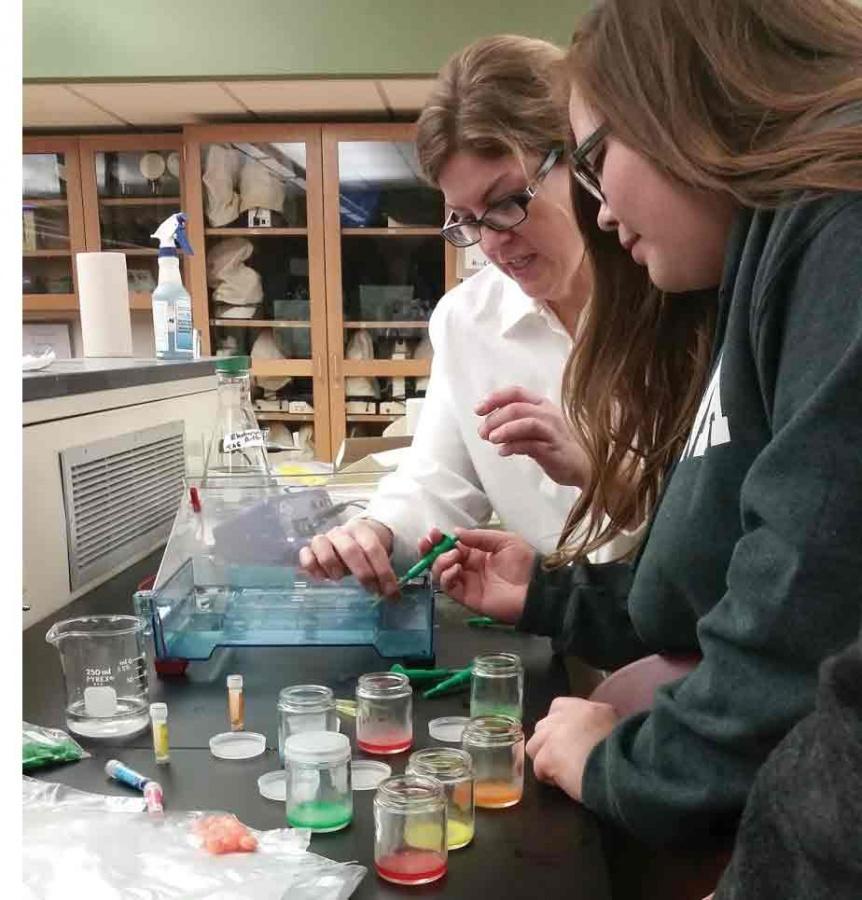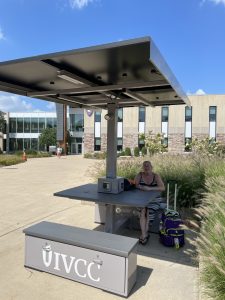Color-coded: Class experiments trace food dye usage
Instructor Lauri Carey works with students to separate different colored dyes from candies and other foods to learn the process on how to separate molecules.
December 3, 2015
When searching for a snack, usually people find the ones that look the most appealing to them. Some of these foods include brightly colored candies, but what makes the candies so colorful?
Lauri Carey, a biology teacher at IVCC, wanted to take a look at the common dyes found in candies, so she conducted a food dye experiment. In her classes, she and her students were comparing the dye seen in Skittles and M&M’s to reference dyes in order to see which dyes are present in the candies.
Carey thought of doing this experiment because she wanted to teacher biology students “about gel electrophoresis which is used in DNA comparisons. This was a more exciting way to see the process happen.” This is also an easier way for her students “to understand that DNA molecules will separate the same way.”
Carey also says that, “there is a lot of interest now in artificial coloring and flavor which is why I am also doing this experiment with a nutrition class.”
For this experiment, the supplies used are agarose gels, which are used to separate a mixed population of DNA or proteins, that is placed in a buffer solution, which is a solution that keeps a constant pH level. Also, a 150V was used to get the molecules to separate on the gels.
Carey says that “this experiment is a fun and exciting way to learn.”




